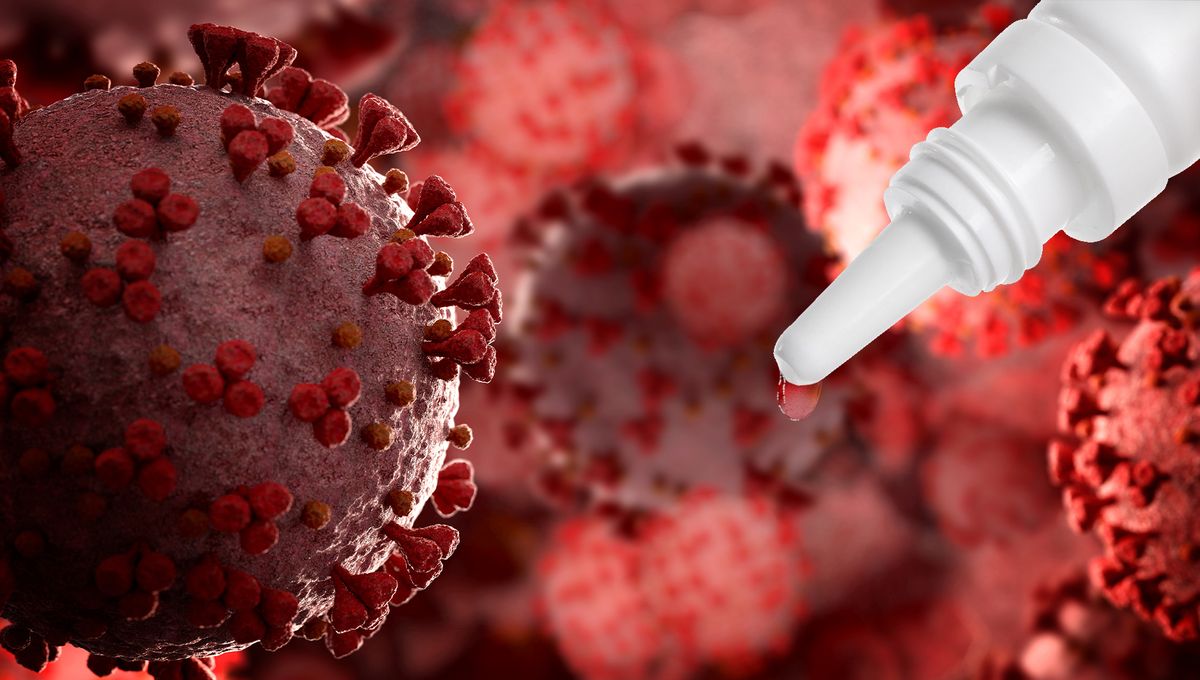
You probably associate vaccination with a needle jabbed into your shoulder muscle, giving you that annoying muscle soreness for many hours (even days) after. Traditionally, most vaccinations are delivered in this way: intramuscularly. Now, a new vaccine delivered as nasal drops (just try not to sneeze) shows promise for drastically reducing transmission of airborne disease.
When the first COVID-19 vaccines were being rolled out at the end of 2020, even amid the general panic and concern, they brought hope of ending the pandemic. The vaccines were between 75 and 95 percent effective at preventing severe COVID-19, and saved many, many lives.
The vaccines, however, were less effective at preventing the spread of the virus, SARS-CoV-2. The Pfizer/BioNTech and AstraZeneca vaccines reduced transmission by between 23 and 57 percent. Vaccinated people could still be contagious. Their symptoms were greatly reduced, thanks to their strengthened immune system, but the virus still proliferated in them and they could pass it on. The pandemic continued.
In a new study, researchers asked whether using a nasal vaccine could be more effective at curbing the spread of the virus. The nasal vaccine itself (iNCOVACC) is not new. It was developed in 2021 at Washington University School of Medicine in St. Louis. It is still under trials in the US, but has already been administered as a booster in India since its approval in 2022.
“To prevent transmission, you need to keep the amount of virus in the upper airways low,” said senior author Dr Jacco Boon, a professor of medicine, of molecular microbiology, and of pathology & immunology at WashU, in a statement. “The less virus that is there to begin with, the less likely you are to infect someone else if you cough or sneeze or even just breathe on them.”
To test the effect of the vaccine on transmission, they immunized Syrian hamsters (a better model organism for SARS-CoV-2 transmission than mice) with either the nasal vaccine or the Pfizer/BioNTech vaccine. Five weeks later (plenty of time for the vaccine to build up the hamster’s immune response) they exposed them to SARS-CoV-2-infected hamsters.
After three days they swabbed the noses of the hamsters (sorry if this gives you horrible flashbacks). In both groups most hamsters tested positive (12/14 for the nasal vaccine and 15/16 for the intramuscular vaccine), but the amount of virus in the mucus (and in the lungs) was dramatically reduced in the hamsters that had received the nasal vaccine compared to both unvaccinated and intramuscularly vaccinated hamsters.
That was exciting, because now came the real test. These hamsters were now co-housed with a second cohort of vaccinated and unvaccinated hamsters. Did the lower viral titer in the mucus of the nasally vaccinated hamsters prevent them from further passing on the virus? Yes, it did!
Of the hamsters exposed to the nasally vaccinated hamsters, none (not a one!) tested positive for COVID-19, regardless of whether they themselves had been vaccinated or not. By comparison, 60 percent of hamsters of this second cohort exposed to intramuscularly vaccinated hamsters still tested positive.
“In an epidemic or pandemic situation, this is the kind of vaccine you’re going to want,” said Dr Boon. These types of vaccines could be used not only for COVID-19, but for other airborne diseases, like the flu.
“Mucosal vaccines are the future of vaccines for respiratory infections,” Dr Boon said. “Historically, developing such vaccines has been challenging. There’s still so much we don’t know about the kind of immune response we need and how to elicit it. I think we’re going to see a lot of very exciting research in the next few years that could lead to big improvements in vaccines for respiratory infections.”
The study is published in Science Advances.
Source Link: COVID-19 Vaccine Nasal Drops Could Stop Viral Transmission